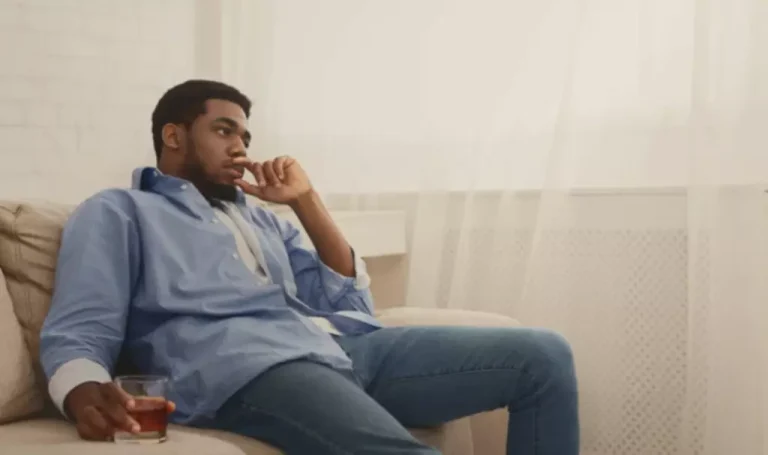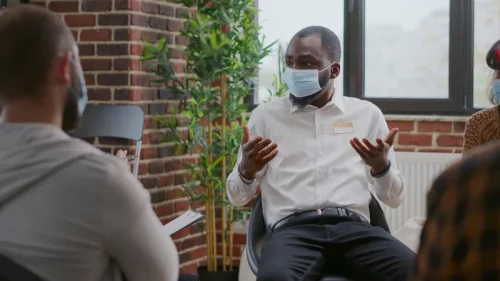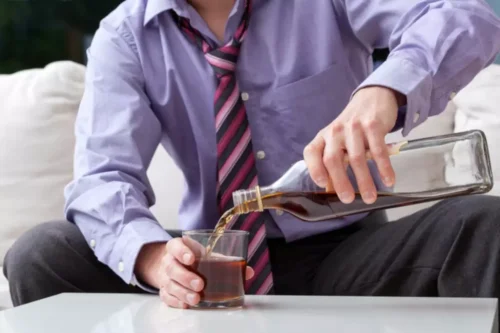
Such types of addictions, called co-occurring disorders, require patients to heal the underlying trauma and provide awareness. If a patient suffers from alcoholism and depression, the therapist can be present to notice any patterns and inform the participant of observations. For example, consider how the brain can only hold so much information, and it can be difficult to process it all internally. Many people recovering from SUD are hesitant to work with others out of fear, but the end result of a group art project may be worth it. Others who see this art will wonder what the inspiration was, and you can either communicate your thoughts to them or leave it up for people to interpret. Rather than feel conflicted when wanting to turn to a substance, you can instead turn to your preferred art form and express yourself.
Heal From Your Substance Abuse Through Our Expressive Arts Program

Play the rhythm of your choice by clapping your hands, tapping the table, clicking, etc. When you get used to it, play it in a different way or choose a new rhythm. Modeling from plasticine, dough, clay is an effective means of modeling a new self-image, productive relationships, values. The Meaning Machine Series is an art therapy directive that allows clients to explore their frame on a particular issue, as well as what meaning they are assigning to things related to that issue. They get the opportunity to define and redefine their meaning around a given stressor or problem in order to work toward healing.
Overcoming Challenges in Group Activities for Relapse Prevention
- It can also help those who have experienced trauma, including sexual assault or childhood abuse.
- Grief is a complex emotional journey that can often feel overwhelming and isolating.
- The goal of such art therapy activities is to reflect and analyze your behavior.
Discover how the transformative power of art therapy is revolutionizing addiction recovery, offering a creative path to healing and self-discovery. In recent years, the field of addiction treatment has witnessed a remarkable shift towards more holistic and innovative approaches. Among these, art therapy has emerged as a powerful tool, providing individuals struggling with addiction a unique avenue for expression, introspection, and healing. The integration of expressive arts therapy with other treatment modalities, like individual, group, and family therapy, helps to address any underlying trauma and support your overall healing. One of the unique features of Sabino Recovery is the inclusion of 50 individual sessions within the 35-day program.
Examples of Recreational Relapse Prevention Group Activities
A big part of the 12 Steps is self-reflection which art therapy facilitates. Art making can help make some of the abstract ideas addressed in the 12 Steps, such as denial, acceptance, and faith, more tangible. Through https://ecosoberhouse.com/ art making, participants can explore these complex concepts. Art therapy can also help with the common co-occurring mental health disorders that people struggling with addiction face such as depression and PTSD.
It can also promote relaxation and build social connections, thus aiding in relapse prevention. Sports and fitness relapse prevention group activities such as yoga and team sports promote physical health and emotional balance. Yoga is an excellent way to practice relaxation and mindfulness. Team sports foster camaraderie, motivation, and accountability. art therapy ideas for adults in recovery Outdoor group activities for relapse prevention such as hiking, camping, and walking groups promote recovery by connecting you with nature, reducing stress, and providing a sense of accomplishment. The physical exercise involved in these activities boosts mood and helps to manage anxiety and depression, which can be triggers for alcohol or drug use.


- She published the findings of her work at the Alcoholic Rehabilitation programme of the District of Columbia in 1953.
- It’s not just arts and crafts; it’s a tangible reminder of why they’re on this journey.
- Submissions will be reviewed based on originality, creativity, and how well the entry expresses the theme.
- This is due to a number of reasons, including things like their natural drive toward play and creative expression.
- Art therapy can occur in hospitals, schools, wellness centers or physical rehabilitation centers, substance abuse rehabilitation centers, and correctional facilities.
- Some are offered purely remotely, some are hybrid courses that combine a residential component with online learning, and some are campus based.
- In the video below, expressive arts therapist Natalie Rogers uses the two techniques mentioned during a therapy session with the same client.
- Today’s addiction recovery landscape is bursting with innovative approaches that breathe new life into the healing process.
- Through the creative process, expressive arts therapy empowers you to find emotional balance which can aid you in your recovery process.
How Can You Introduce Art Therapy in Your Sober Journey?
- Another advantage of art therapy that often gets overlooked is the ability to form bonds with others in situations very similar to your own.
- As they fill the jar with these emotion-evoking items, they’ll remember positive moments in their lives and bring up good sentiments.
- They felt safe in their bodies and had a stronger sense of peacefulness.
- You can also learn skills such as communication and assertiveness to manage triggers and cravings effectively and repair your relationships with family members and friends.
